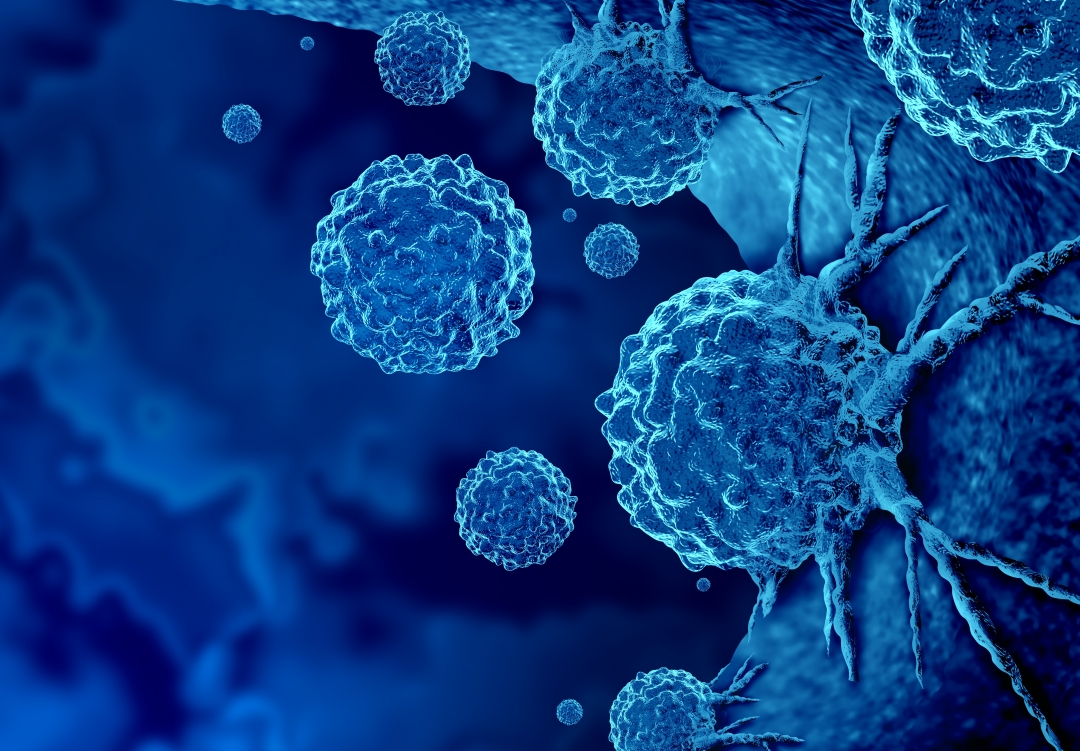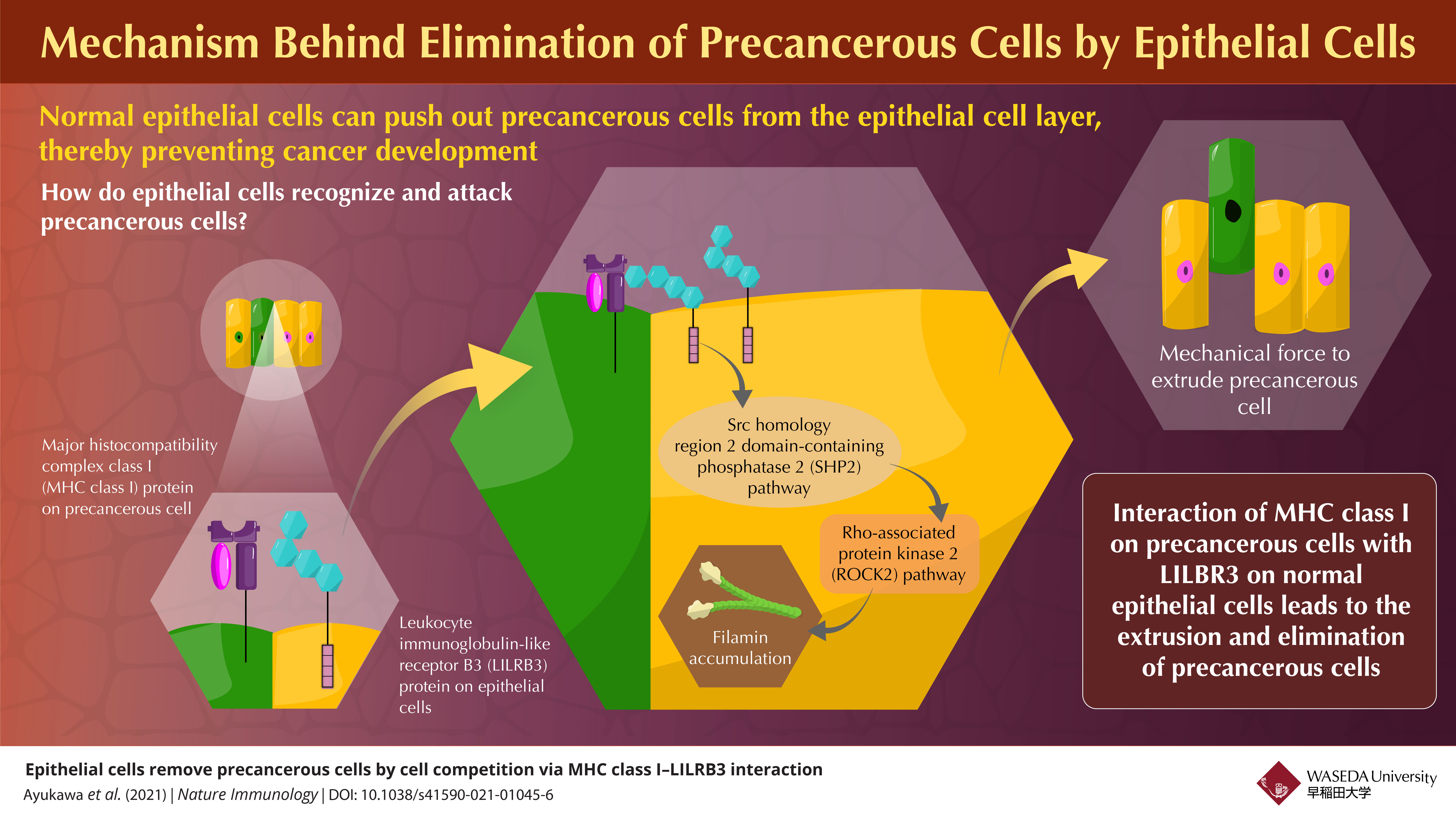New Study Reveals How Epithelial Cells in the Body Naturally Eliminate “Precancerous” Ones
Wed, Dec 15, 2021-
Tags
New Study Reveals How Epithelial Cells in the Body Naturally Eliminate “Precancerous” Ones
Waseda University researchers demonstrate how healthy epithelial cells recognize precancerous ones and the mechanism behind their eventual elimination
Normal epithelial cells show the ability to push out precancerous ones present in the epithelium, by means of “cell competition.” But the exact molecular mechanism of this recognition by normal epithelial cells was unknown. Now, researchers from Waseda University, Japan, have unraveled the interactions and cellular pathways leading to this extrusion, allowing them to identify a candidate for a therapeutic target for future cancer prevention research.
In addition to its immune surveillance system, recent reports have shown that the human body has defense mechanisms run by non-immune epithelial cells. Epithelial cells are a type of cell that occur in layers that line most surfaces of our body. These epithelial cells can recognize and extrude neighboring precancerous cells from the epithelium; this extrusion process is called cell competition. This form of immune-like surveillance has garnered attention in recent years based on its potential for future immune-like therapeutic targets for cancer preventive treatment. However, it is still unknown what kind of ligand-receptor interactions are involved in the recognition of precancerous cells by normal epithelial cells. Recently, a group of scientists have successfully solved this research question and have published their findings in Nature Immunology.
Speaking about the premise of their study, Professor Takeshi Maruyama, an Associate Professor at the Waseda Institute for Advanced Study at Waseda University, who led the research group, says, “During the process of cell competition, normal epithelial cells can be primed by contact with precancerous cells. However, it was previously unclear how neighboring normal epithelial cells recognize precancerous cells to eliminate them.”
In this work, the researchers identified a plasma membrane protein, Canis suboptimal alteration recognizing protein (Canis AltR) in non-transformed canine epithelial cells, the function of which was unknown, as a recognizing protein for cell competition. In humans, the protein most similar to AltR is leukocyte immunoglobulin-like receptor B3 (LILRB3). AltR/LILRB3 interacts with major histocompatibility complex class I (MHC class I) that is expressed on precancerous epithelial cells.
MHC class I-AltR/LILRB3 interaction causes the activation of AltR/LILRB3, which triggers an intracellular SHP2–ROCK2 (Src homology-2 domain-containing protein tyrosine phosphatase-2–Rho-associated protein kinase 2) pathway. This SHP2–ROCK2 pathway leads to the “accumulation of cytoskeletal components,” which generates a mechanical force to extrude precancerous cells, in the normal epithelial cells at the boundary with precancerous cells. Finally, normal epithelial cells push the precancerous cells out of the epithelium to eliminate them from the body.
Interestingly, this molecular mechanism occurs independently of natural killer or CD8+ T cell-mediated immune responses. “Our study describes a new immune-like mechanism by non-immune epithelial cells to suppress tumorigenesis,” says Maruyama.
The researchers hope that these significant findings can be applied to real life cancer treatment. Maruyama adds, “The recombinant MHC-I-α3 protein used in this study enhances the elimination of precancerous cells and suppresses the formation of tumors and precancerous lesions. We hope that this biomolecule would contribute to a therapeutic candidate for cancer prevention by the elimination of precancerous cells.”
This study advances us closer to more effective cancer treatments in the future, bringing hope to the fight against this devastating disease.

Waseda University researchers identify the underlying mechanism behind the extrusion of precancerous cells by epithelial cells, a mechanism that prevents the formation of cancerous lesions. Image courtesy: Unsplash
Reference
Authors: Shiyu Ayukawa1, Nagisa Kamoshita2, Jun Nakayama1, Ryohei Teramoto1, Novalia Pishesha3, Kenji Ohba4, Nanami Sato5, Kei Kozawa5, Hikari Abe1, Kentaro Semba1, Nobuhito Goda1, Yasuyuki Fujita5 6, Takeshi Maruyama2
Title of original paper: Epithelial cells remove precancerous cells by cell competition via MHC class I–LILRB3 interaction
Journal: Nature Immunology
DOI: 10.1038/s41590-021-01045-6
Latest Article Publication Date: October 22, 2021
Affiliations: 1School of Advanced Science and Engineering, Waseda University, Japan
2Waseda Institute for Advanced Study, Waseda University, Japan
3Faculty of Arts and Sciences, Harvard University, USA
4Jichi Medical University, Japan
5Hokkaido University Graduate School of Chemical Sciences and Engineering, Japan
6Kyoto University Graduate School of Medicine, Japan















